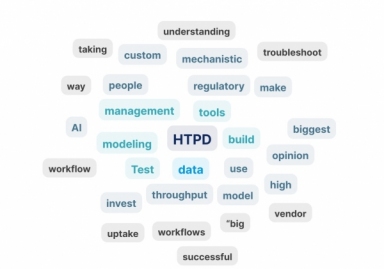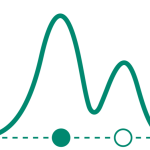
The biggest challenge is still the people and Quantitative Structure-Activity Relationship (QSAR) plus mechanistic modeling were two key take-home messages from the 6th International conference devoted to High-Throughput Process Development (HTPD) and smart process development. The most recent conference was organized in Valletta, Malta (Fig.1) in October/November 2023, and attracted 74 participants from 11 countries and 35 different companies or academic institutions. The 27 different presentations and 20 posters divided into 7 sessions plus one plenary lecture provided a large amount of scientific and technical content over the course of the four-day conference, and the discussions and exchange of information during the meeting was both open and intense.
The HTPD conference series started as a joint initiative by Cytiva and Genentech in 2010 at a time when high-throughput process development was in its early days. HTPD was mainly limited to 96-well plates filled with chromatography resins used for resin selection and initial screening of running conditions. Since then, HTPD in chromatography applications has been well established among most biopharmaceutical companies but has also expanded to upstream and cell culture screening as well as to formulation applications.
A preconference day focused on getting up to speed with mechanistic modeling
This year, the week started with a pre-conference day about mechanistic chromatography modeling, organized by Cytiva and guided by Cytiva modeling specialists. The sessions included an introduction to in silico process development and GoSilico™ Chromatography Modeling Software, covering the basic workflows of mechanistic modeling, a live software demo, but also a deep dive into case studies, status of regulatory acceptance of modeling, and further fields of application.
HTPD is used beyond downstream today
As one proof point that HTPD is not only a downstream approach today, the keynote lecture at the HTPD-conference focused on upstream and cell culture for the first time. Professor Martina Micheletti from University College London presented ‘Scale-down tools for rapid upstream process development: fundamentals and scaling approaches. Professor Micheletti presented a historical view on the origin of microwell plates, and how the understanding of the flow and mixing in individual cells on the plate has evolved, along with case studies on microwell-based pseudo perfusion bioreactors. The presentation concluded with an outlook of future research areas which included intelligent automated system for the whole vaccine manufacturing process, for short notice development to support next pandemic response.
A lot of interest on what mechanistic modeling can accomplish in PD and manufacturing
Mechanistic modeling and smart PD has become one of the main areas discussed during the HTPD conferences, and 2023 was no exception, with that specific session ranking highest and most relevant in the conference survey. The session also contained the first of a two-stage rocket from Merck with an approach involving Quantitative Structure-Activity Relationship (QSAR) plus mechanistic modeling. Gabriela Sanchez from Merck presented in the Modeling session, and her colleague Michael Rauscher presented more specifics about the QSAR later during the week. These two presentations together ranked among the most significant developments people were made aware of during the conference. The QSAR model by Merck has been developed and trained with 10,000 data points from historical data on 40 proteins (mainly mAbs but a few Ab variants) and 51 resins. Calculated descriptors for proteins and resins could then provide predictions of product binding and optimal screening regions for separation. This QSAR models were followed by the mechanistic modeling approach and reduced the number of screenings experiment by 20-50%. QSAR is of course not something new and it has been a topic on the HTPD conference several times. However, this was the first time it was presented as something that is used in daily practice and Merck stated that this approach is used “as much as possible” for new PD projects. One of the challenges they saw, was that the models are based on historical datapoint, predominantly mAbs, and the future pipeline is more diversified with several types of antibody variants.
Another presentation during the modeling session that gained interest was Lukas Döring from Rentschler, who talked about the possibilities to use mechanistic modeling for virus clearance studies. Indeed, viral clearance studies are important, but costly and time-consuming tasks in downstream process development. Today, virus surrogates are being used more and more, yet if mechanistic modeling could be used it would have the potential to speed up timelines and reduce cost even further. Two challenges highlighted were the current practice of using microscale columns since the flow rate is limiting for viral clearance in short columns, and that the precision in the models is not there yet.
As indicated in the acronym HTPD has up until now been targeting process development. In the 2nd session Manoj Ganesh from Regeneron highlighted how his team is using same or similar HTPD approaches to also support manufacturing with troubleshooting and accelerating small-scale investigations. Many of the challenges are the same with analytical technologies and data handling. However, when working in a cGMP environment, these challenges become even more important to tackle.
Analytics is still a challenge in HTPD work
The challenge of having access to sufficient high-throughput analytical technologies has been a repeating topic during the HTPD conference series. Jakob Muller from KIT presented on automated Raman spectroscopy measurements for integrated model development, and a former KIT student, Carsten Radtke from PHABIOC, talked about a novel multi-well plate for improved UV/Vis absorbance measurements. Alison Tang from AstraZeneca instead highlighted the issue with pH measurement: measuring pH accurately in a high throughput fashion using a small amount of sample has always been a challenge. Indeed, even if traditional micro pH probes can measure pH accurately of very small volumes, it is very labor-intensive and existing 96-well plates with fluorescence pH sensors has a very narrow pH detection range. Alison Tang instead presented an ongoing investigation around pH sensitive nanosensors. These nanosensors are ~30 nm diameter and by using different types of incorporated fluorophores they are capable of monitoring pH values from 2.5-8.0. Results so far have been very promising, and the pH nanosensors can be used with an automated liquid handler, which is a strong benefit in high-throughput applications. Further studies will focus on feedback controls, but will also evaluate similar nanosensors for other applications, such as oxygen uptake measurements in cells during culture.
An insightful panel discussion
One appreciated session during the HTPD conference is always the panel discussion. In 2023 it was facilitated by Michael Doherty from Ring Therapeutics, and the panel members were: Felix Wittkopp, (Roche), David Smithson (Seagen), John Welsh (Rivanna Bioprocess Solutions), Cornelia Walther (Boehringer-Ingelheim) and Matt Petroff, (SparkTherapeutics). With questions from the audience the panel members discussed various topics on HTPD from a technology, applications, strategy, and regulatory point of view (Fig 2). When asked ‘what is the single biggest challenge in HTPD still to overcome?’ the panel almost unanimously answered: ‘It is still the people’. How to educate, how to make more people adopt the HTPD methodology, how to make them trust the results and trust the models, and how to ensure acquired knowledge is maintained.

Beyond mAbs: AAV and mRNA process development were discussed at HTPD 2023
Since the clinical pipeline is becoming more and more diversified, novel types of biomolecules have also become more in focus for HTPD. Mahsa Hadidi from Sanofi and Katerina Farukshina from Cell and Gene Therapy Catapult both presented on the purification development of adeno associated viral (AAV) vectors. Once again, the challenge of high throughput analytical techniques and assays was highlighted. Several analytical assays for AAV require high concentration of viral particles and therefore requires large volumes of starting material, which is not always available during process development.
Some non-chromatographic high-throughput technologies were also presented in this session. Spencer McMinn from Merck discussed the need to improve the in vitro transcription (IVT) step to be able to quickly develop new mRNA type of vaccines. McMinn presented how integration of algorithmic optimization tools with a robotic liquid handling system could enable high-throughput platform and provide improved knowledge of the IVT process.
Closing HTPD 2023, and already planning for HTPD 2025
The final session of the HTPD 2023 conference was ‘Frontiers in HTPD/Smart PD’ chaired by Felix Wittkopp from Roche and Tobias Hahn from Cytiva, and provided an opportunity to present the very latest trends and concepts in HTPD. The already mentioned QSAR presentation from Merck was one of the most appreciated topics in the session. During the session, Tobias Hahn also provided an odyssey on topics that have been presented over the five conferences.
In her concluding remarks, Jennifer Pollard (co-organizer of the conference) continued that thread and summarized how the HTPD community has evolved and been supported by the conference series since the very first event in Krakow 2010. If ‘the biggest challenge is still the people’ the HTPD conference is an important approach to build up the community, share experiences and present proof points to increase trust the HTPD and in silico PD. 100% of the respondents from the conference survey also desired a new event in 2025. Desired topics for the next conference included machine learning, more about new modalities but most dominant were requests for regulatory guidelines in using mechanistic modeling and examples of filing INDs using modeled data.
Good news is that the planning of HTPD 2025 has already started.





